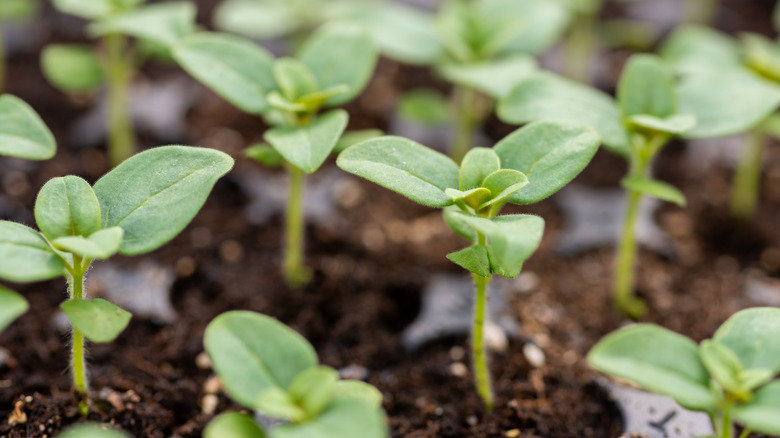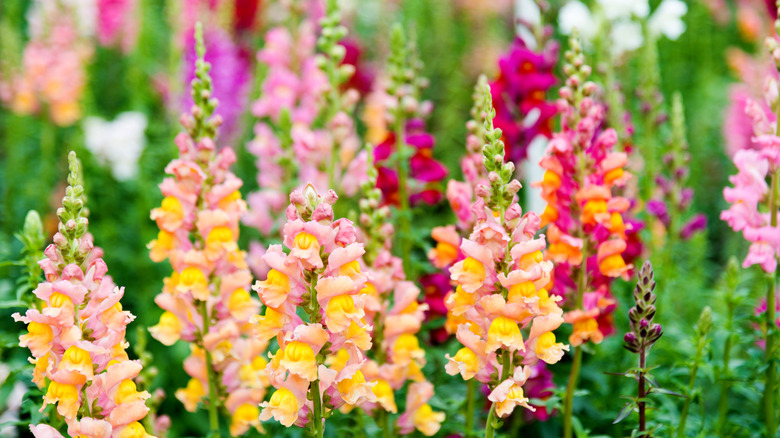Save Yourself The Trouble And Don't Try Growing This Popular Flower From Seed
Gardening enthusiasts know the joy of nurturing a plant from seed to full bloom. Watching the fruits of your labor grow is rewarding in all aspects, but it can also be an extremely intensive process, depending on the species you're growing. Take the snapdragon (Antirrhinum majus), for example. This flower named after a mythical beast is a beautiful, vibrantly-colored perennial that thrives in USDA Zones 7 to 10, and grows well in full sunlight and well-draining soil. Known for its long-lasting, multicolored blooms, the snapdragon is often the star of the show in bouquets or vases. However, snapdragons can be time-consuming and labor-intensive to grow from scratch – that is, starting from seed.
Snapdragon seeds are notoriously tiny, and may prove difficult to plant for novice gardeners. They also require a cold treatment for successful germination. If you're not completely set on growing and taking care of your snapdragon flowers from seed, it's much easier to start with a young plant or seedling, which you can pick up from your local nursery or gardening store. Nurturing your plant from this stage still yields most of the joys of growing a plant, including the tender love and care, but without the initial headache.
Why it's best to grow snapdragons from young plants
As mentioned, snapdragon seeds are exceptionally small. They're so small that they might be compared to dust particles, making it hard to see where you're placing the seeds, and often requiring tools like magnifying glasses. Additionally, successful germination also requires specific and proper timing to ensure a happy plant. Ideally, this means planting snapdragon seeds 8 to 10 weeks before the last expected frost date in your gardening zone. For beginners, this window can be hard to hit, and getting the timing wrong can lead to poor outcomes. At the seed-sowing stage, the seeds can be prone to moisture loss as they need light to germinate, which means that you'll want to cover them lightly with vermiculite, which will also prevent algae growth.
Even under good conditions, snapdragon seeds can take quite some time to sprout and grow. This slow pace can often lead to anxious feelings about whether the plant is growing properly. Moreover, the plant's growth slows down even further during the summer months, adding another layer of difficulty if you live in an area with scorching summers. Starting with a young snapdragon plant eliminates these hurdles and gives you a big head start in the growing process. Furthermore, they'll be less susceptible to environmental factors, so you can simply focus on maintaining and caring for your snapdragons. The biggest task you'll have left is pruning the plants until they mature to achieve vibrant snapdragons all autumn long.

